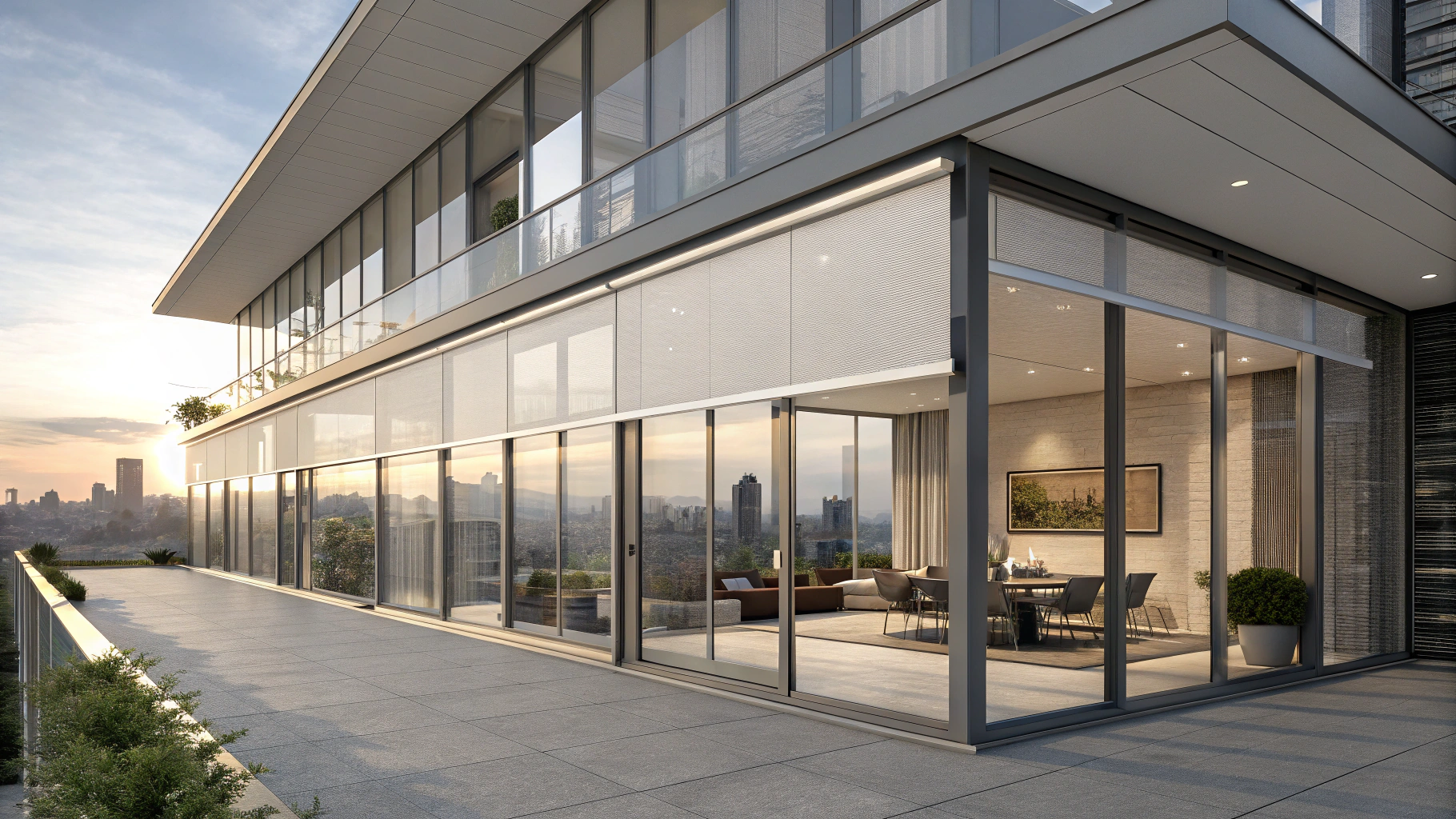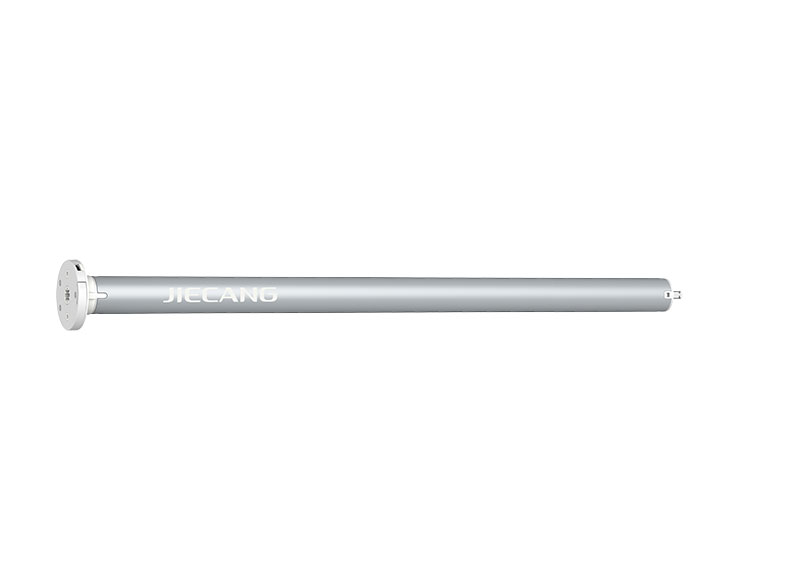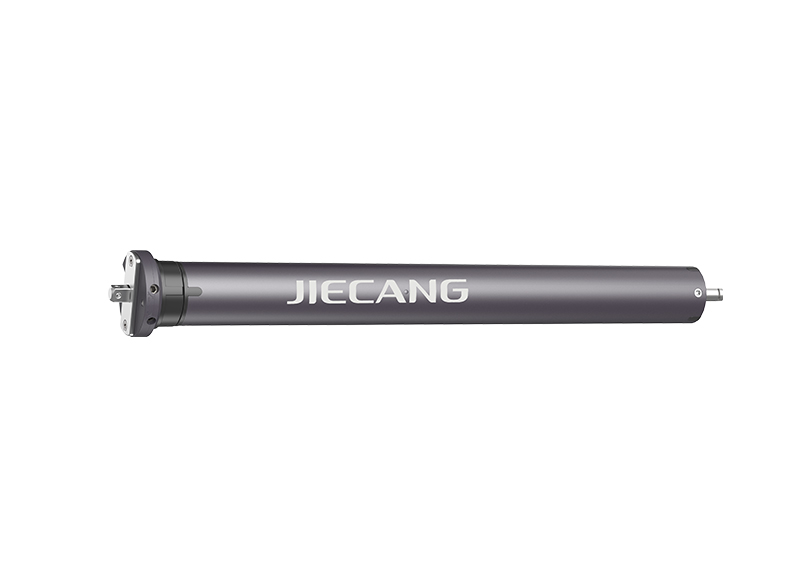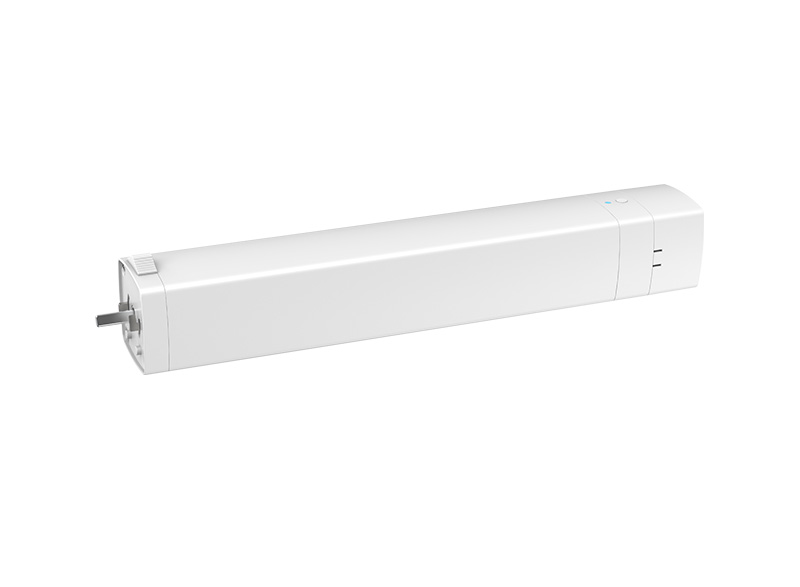Motorized shading systems are now a key feature in modern architecture. In large glass façades, sliding doors, or tall curtain walls, the motor is more than just a mechanical part; it is central to how well the system works. Choosing the right motor for large-window shading means looking beyond torque ratings and considering power, control, noise, integration, and durability within the building's design.
Large windows make a strong visual impact, but they also present engineering challenges. Shades that cover several meters in width or height are heavy and must handle frequent movement, gravity, and other environmental factors. If the motor is not strong enough for the load, it can cause uneven movement, fabric strain, and early system failure.
To choose the right motor size, begin by looking at torque and load capacity. The motor should easily support the total weight of the shade fabric, tube, and bottom bar. Larger or high-tension systems often need AC tubular motors instead of smaller DC ones. Sometimes, using several synchronized motors helps spread the load and keep the shade aligned over wide areas.

Torque, which is the rotational force, directly affects whether the motor can lift the shade smoothly and reliably. Manufacturers typically list the needed torque based on the fabric type and shade size. For large shades, engineers often add extra torque capacity to allow for future upgrades, fabric changes, or tension adjustments without needing to replace the motor.
Stronger motors also put more weight on the mounting surface. The headrail or cassette needs to be reinforced to handle the torque and avoid bending. If this is overlooked, the frame can become distorted, misaligned, or cause the shade to roll up unevenly over time.
The type of power source you choose has a big impact on how easy the system is to install and maintain over time.
Hard-wired motors, whether 120V or 230V AC, are still the most reliable choice for new buildings and major renovations. They offer steady power for heavy use and can be easily connected to building management systems.
For retrofit projects or windows where electrical access is limited, DC motors powered by batteries or solar panels are a great option. Solar-powered systems help lower wiring costs and support green building goals, but the panels must be placed carefully to get enough sunlight.
Sometimes, a hybrid approach works best in mixed settings. Hard-wired motors can be used for main facades, while wireless battery or solar motors are chosen for secondary glazing or skylights where wiring is difficult.
In today's connected buildings, motorized shading rarely stands alone. Smart-home and building automation integration has become a baseline expectation. Motors should support open protocols such as RS-485, KNX, or IoT APIs, enabling seamless communication with lighting, HVAC, and security systems.
This integration allows shades to respond dynamically to environmental cues—lowering automatically to reduce solar gain, or retracting during high winds. Voice control, scheduling, and remote monitoring add another layer of convenience for both residential and commercial users.
Industry Insight:
Smart shading is no longer a luxury; it's an energy management tool. Coordinated motor control across large facades can lower HVAC loads by minimizing heat gain and glare, improving both comfort and energy efficiency.

Large-window shades amplify small imperfections—including sound. Motor noise that's acceptable in a small blind becomes intrusive when multiplied across multiple large openings.
When specifying motors, prioritize models rated for“whisper-quiet”operation, often under 40 dB. Motors with soft-start and soft-stop technology reduce mechanical stress, prevent jerky movement, and extend fabric life. For premium installations, noise-dampening brackets and isolation mounts can further enhance acoustic performance.
From an aesthetic perspective, motorization removes unsightly cords and chains, giving designers freedom to maintain clean architectural lines while ensuring accessibility and safety.
Not all motors face the same operating environment. Exterior shading systems—such as façade-mounted screens or retractable louvers—must withstand weather, UV exposure, and temperature extremes.
Choose motors with:
-Weather-sealed housings to prevent moisture ingress
-Corrosion-resistant shafts and fasteners for coastal or humid environments
-Thermal overload protection to prevent damage from heat buildup
When coupled with wind and sun sensors, these systems can automatically retract or deploy to protect the shade and maintain optimal building performance.

Good installation is key to making sure the motor works well. For large shades, it's important to measure, align, and level everything carefully. Even a small misalignment can cause the shade to roll up unevenly, crease the fabric, or create mechanical problems.
Installers should verify that motor limits are set correctly and that shades travel smoothly to their upper and lower stops. Motors with adjustable electronic limits simplify calibration and allow fine-tuning after installation.
Easy access for maintenance is important too. Large systems are used more often, so make sure the motor and controls are placed where they can be serviced, reprogrammed, or have batteries replaced without trouble.
Specifying a motorized shading system should consider total lifecycle cost, not just the motor price. A well-engineered system delivers energy savings, reduces HVAC loads, and lowers glare-related lighting costs over time.
|
Factor |
Initial Cost Impact |
Long-Term Benefit |
|
Motor torque and quality |
Higher upfront cost |
Longer lifespan, smoother operation |
|
Smart integration |
Medium |
Improved energy management, automation flexibility |
|
Quiet operation features |
Moderate |
Enhanced user comfort, premium experience |
|
Weather protection |
High (for exterior) |
Extended durability and safety |
|
Professional installation |
Medium |
Reduced maintenance and calibration issues |
|
Energy-efficient operation |
— |
Lower HVAC and lighting costs |
For large architectural shades, it's important to keep service and safety in mind. Systems should have manual override options so they can be used safely during power outages or network problems.
Modular motor systems are becoming more common. They let you move several shades together for a uniform look and easier control. Select motors that can receive firmware updates or support new integration protocols, ensuring your system remains compatible as technology evolve.
Safety is also aesthetic—eliminating cords and manual chains enhances both appearance and accessibility while reducing risk in public or child-occupied spaces.

Choosing the right motor for large-window shading systems is as much about engineering foresight as it is about design. The motor you specify today determines not only the movement of fabric but also the performance, comfort, and energy efficiency of the space for years to come.
Architects, contractors, and facility managers should evaluate torque, power, integration, durability, and lifecycle value together—not in isolation. When properly selected and installed, a high-performance motor transforms large shades into quiet, intelligent, and efficient architectural assets.
Looking to specify motors for your next large-window shading project? Partner with JIECANG, which is a trusted automation specialist, to help match motor technology to your architectural and performance goals — ensuring that your shading system moves as elegantly as the space it enhances.
Ф25mm DC tubular motor - Battery Powered
Ф35mm AC Tubular motor-Mechanical Limit
Curtain motor - Built-in WiFi module